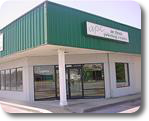

Contact us for your printing needs.
Action Printing Center, Inc.

3315 Market Street Pascagoula, MS 39567
Business Hours
Monday - Friday
8:00 a.m. to 5:00 p.m.
Toll Free 1-888-741-7136 Local 228-769-2676 Fax 228-769-2924


Free local delivery. Shipping services are available.
The following section contains some of our most frequently asked questions. Take a moment and browse through the list to see if it can help you with any questions you may have.
Can I email the file(s) to you or do you prefer a CD-ROM or Flash Drive?
It depends. If you have the time, send everything on CD or flash drive. If you are short on time and want to try e-mail, be sure to see our Sending Files to Action Printing Center section of our site.
What format should I prepare and save my graphics?
Can you offer any tips on graphics?
There are dozens of graphics file formats but only two -- EPS and TIFF are the standards for commercial high resolution printing. Beyond file type other graphics issues that can jeopardize your printing project are color, compression, complexity, and completely missing images.
When you send your document to Action Printing Center, we often can and do take the time to fix some of the common problems listed below. However, there may be instances in which we would have to charge for any additional time spent. Save time, money, and frustration with proper preparation and submission of your graphics for printing.
Avoid these common problems when sending your graphics:
- Missing Graphics
It's probably easier to do a headcount on the graphics in your publication than on the fonts used but it is still possible to miss a few, especially with large, graphics-intensive documents. Missing graphics can result in delayed printing or if you don't proof carefully enough it can be an expensive error when you find out later that the image is missing or a low-resolution screen version was printed instead. Graphics may appear to be missing if you change filenames after linking. If you find that you need to change the name of a graphic file, re-link it in your page layout program before sending the graphics and application file.
- Font missing from EPS graphics
If you have embedded EPS files that include text be sure to send the fonts for those images as well. Generally it is best to convert the text to curves but sometimes this can alter the image in unwanted ways. If that's the case, you must send the font files for that text along with the graphic.
- EPS and TIFF vs. other formats
EPS for vector images and TIFF for bitmapped are the preferred format for high resolution printing. Native graphics formats from standard programs such as Adobe Illustrator or Photoshop are also usually welcome. When Windows users cut-n-paste images from other applications (such as PowerPoint images or Excel charts) you end up with a WMF (Windows Metafile) graphic embedded in the page. Often these WMF files print with the wrong colors or with changes in line weights (lines may disappear or may print thicker than expected). GIF images obtained from the Web are usually too low resolution for printing and they are in RGB format which is not designed for PostScript color printing. Avoid sending GIF, JPG, WMF, BMP, PICT.
- Compression
Compressed images can cause problems for PostScript output devices. While they may print -- eventually -- it can considerably slow down your job. For best results, send your graphics in uncompressed TIFF or EPS formats.
- Complex images
If you have a file that contains complex images such as gradient fills or nested EPS graphics, planning ahead may avoid surprises. Our PostScript device may be unable to handle the image and if you know in advance you can try simplifying your file or converting it to a bitmap. One test of your file is printing it to your own printer. If your file won't print to your laser printer it probably won't be output correctly on an imagesetter. Even invisible parts of an image add to the complexity and can cause output problems. Delete unnecessary nodes, paths, and channels from your graphics.
- Modifications during page layout
It's easy to take a graphic into PageMaker or QuarkXPress and flip it around, tilt it a little, reduce the size a smidgeon. Just because you can doesn't mean you should. Each step adds to the processing time during PostScript output and increases the chances that your file won't print properly. Rotate and resize within your graphics software before placing an image in your page layout program.
- Resolution
Graphics at the wrong resolution may print alright, but the resulting image is often less than acceptable. Images pulled from the Web are a common low-resolution culprit. Artificially increasing the resolution may give acceptable results on screen but the image loses quality and it becomes most obvious after high resolution printing. Too much resolution results in larger graphics files and can slow down your print job (and increase costs).
FAQs